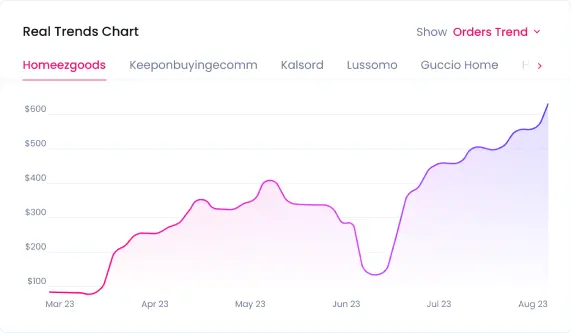Strategic Dropshipping: Using Google Trends for Maximum Impact
Contents

Imagine being able to predict the next big trend in e-commerce before it becomes mainstream, allowing you to stock your online store with products that are just about to skyrocket in demand. This isn’t just a fantasy—it’s a reality for savvy dropshippers who leverage the power of Google Trends. In the fiercely competitive world of dropshipping, where new products and trends emerge almost daily, having the ability to anticipate market shifts can mean the difference between a thriving business and one that struggles to stay afloat.
In the ever-evolving world of e-commerce, dropshipping has emerged as a highly popular business model, appealing to entrepreneurs due to its minimal initial investment and low barriers to entry. Unlike traditional retail models that require significant capital to purchase and store inventory, dropshipping allows business owners to sell products directly from suppliers to customers without handling stock or logistics.
However, the simplicity and accessibility of dropshipping come with their own set of challenges, notably the fierce competition and the constant need to stay ahead of market trends. In this dynamic landscape, success hinges on the ability to identify emerging trends and capitalize on them swiftly. This is where Google Trends, a powerful and free tool from Google, comes into play.
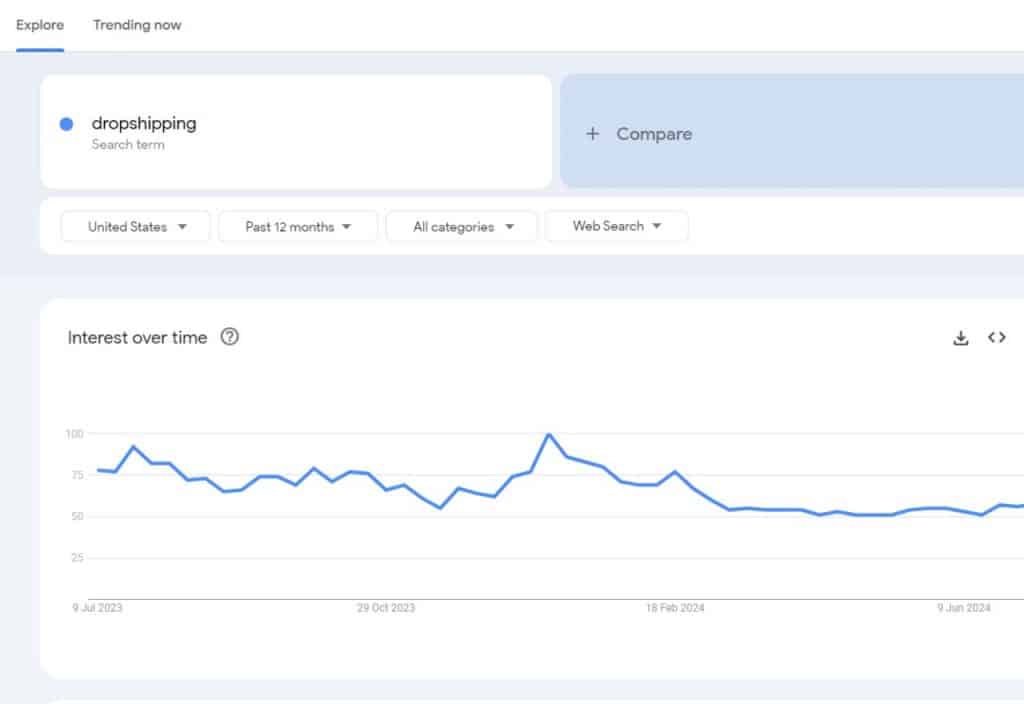
Google Trends offers invaluable insights into what people are searching for on the internet, showing the relative popularity of search queries over time and across different regions. By understanding these search trends, dropshippers can make informed decisions about which products to sell, when to introduce them to the market, and how to tailor their marketing strategies effectively.
The goal of this article is to provide a comprehensive guide on how to strategically use Google Trends to maximize the impact of your dropshipping business. We’ll delve into what Google Trends is, how it works, and why it’s an indispensable tool for dropshippers.
Moreover, we’ll explore practical strategies for finding profitable niches, identifying winning products, optimizing marketing efforts, and much more. By the end of this guide, you’ll be equipped with the knowledge and tools to stay ahead of the competition and ensure your dropshipping venture thrives.
What Is Google Trends?
Google Trends is a powerful tool provided by Google that allows users to analyze the popularity of search queries over time. By entering specific keywords or topics, you can see how search interest has fluctuated, compare the relative popularity of different terms, and identify patterns and trends. This data is incredibly valuable for understanding consumer behavior and making informed business decisions.
Features and Functionalities
Google Trends offers a range of features that make it an indispensable tool for dropshippers:
- Interest Over Time: This feature shows how search interest for a particular keyword has changed over a specific period. It allows you to identify whether a trend is growing, stable, or declining.
- Geographical Insights: Google Trends provides data on where search interest is highest, helping you to target specific regions where your products might be more popular.
- Related Queries and Topics: This section highlights other keywords and topics that people are searching for in relation to your main keyword, offering insights into related trends and potential product ideas.
- Real-Time Data: For more immediate insights, Google Trends offers real-time data that shows what’s trending right now. This can be particularly useful for capitalizing on sudden spikes in interest.
Importance of Using Google Trends for Market Analysis
Understanding what consumers are searching for can give you a significant edge in the competitive dropshipping market. Google Trends helps you:
- Stay Ahead of Trends: By monitoring search trends, you can identify emerging products before they become saturated, giving you a first-mover advantage.
- Optimize Marketing Strategies: Insights from Google Trends can help you refine your SEO and PPC campaigns by focusing on the most relevant and popular keywords.
- Plan Inventory and Promotions: Knowing when certain products are in high demand allows you to manage inventory more effectively and plan promotional activities to coincide with peak interest periods.
How Does Google Trends Work?
Google Trends works by analyzing a portion of Google’s vast search data to provide insights into search interest for specific terms. Here’s a closer look at how it functions:
Data Collection
Google Trends collects data from Google Search, YouTube, and other Google services, aggregating it to reflect search interest over time. This data is anonymized and normalized to ensure accuracy and relevance.
Metrics Used
Google Trends uses several key metrics to present its data:
- Search Volume Index: This index shows how search volume for a term compares to the total search volume across different time periods.
- Interest by Region: This metric indicates where search interest is highest, helping you identify geographical hotspots for specific keywords.
- Related Queries and Topics: These metrics highlight other popular searches related to your main keyword, providing deeper insights into related interests.
Data Representation
The data in Google Trends is represented through various visual formats such as graphs, charts, and heat maps, making it easy to interpret and analyze. For instance, the “Interest Over Time” graph provides a visual representation of how search interest has fluctuated, while heat maps show regional interest intensity.
By understanding how Google Trends works, dropshippers can effectively utilize this tool to gain valuable market insights, identify profitable opportunities, and make informed decisions that drive business success.
What Is Dropshipping?
Dropshipping is a retail fulfillment method where a store does not keep the products it sells in stock. Instead, when a store sells a product, it purchases the item from a third party—usually a wholesaler or manufacturer—and has it shipped directly to the customer. As a result, the seller doesn’t have to handle the product directly.
Benefits of Dropshipping
- Low Startup Costs: Without the need to invest heavily in inventory, dropshipping reduces the financial risk associated with starting a business.
- Flexibility: Dropshipping allows entrepreneurs to run their businesses from anywhere, as long as they have an internet connection.
- Wide Product Selection: Since you don’t need to pre-purchase the items you sell, you can offer a wide variety of products in your online store.
Challenges of Dropshipping
- Supplier Reliability: Your business relies on third-party suppliers to fulfill orders accurately and on time. Any issues on their end can impact your customer satisfaction.
- Competition: The low entry barriers of dropshipping mean there is a lot of competition, which can drive down profit margins.
- Lower Profit Margins: Because you are not buying in bulk, the cost per unit can be higher, leading to lower profit margins compared to traditional retail.
Comparison with Traditional Retail Models
In traditional retail, businesses purchase products in bulk and manage their own inventory, which requires significant upfront investment and storage space. Dropshipping, on the other hand, eliminates the need for inventory management, allowing businesses to operate with less capital and reduced risk.

Why Use Google Trends for Dropshipping?
Leveraging Google Trends can provide numerous advantages for dropshipping businesses, helping them stay ahead of the competition and maximize their impact.
Benefits of Using Google Trends
Identifies Trends: Google Trends helps you spot emerging trends early, allowing you to introduce trending products to your store before your competitors.
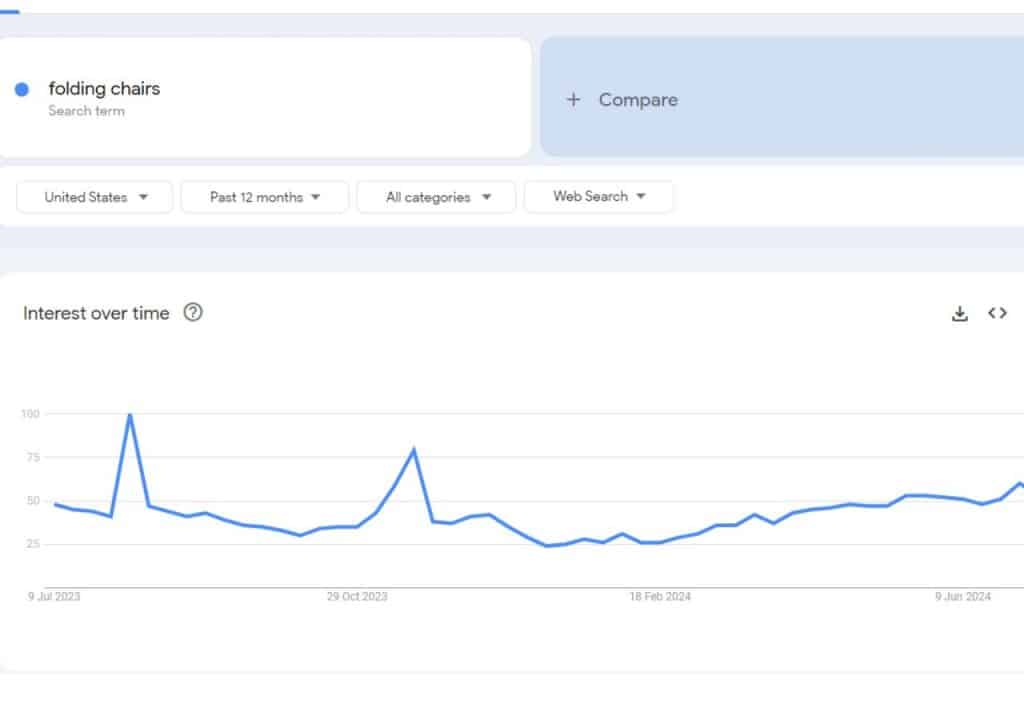
Understand Consumer Interest: By analyzing search data, you can gain insights into what consumers are interested in, helping you tailor your product offerings and marketing strategies.
Optimize Marketing Efforts: Use search data to refine your SEO and PPC campaigns, focusing on the most relevant and popular keywords.
Plan Inventory and Promotions: Understanding when products are in high demand allows you to plan your inventory and promotions more effectively.
Making Data-Driven Decisions
Google Trends provides actionable data that can inform your business decisions. Whether it’s choosing which products to add to your store, planning your marketing strategy, or identifying new market opportunities, Google Trends helps you make decisions based on real-time data, reducing guesswork and increasing your chances of success.
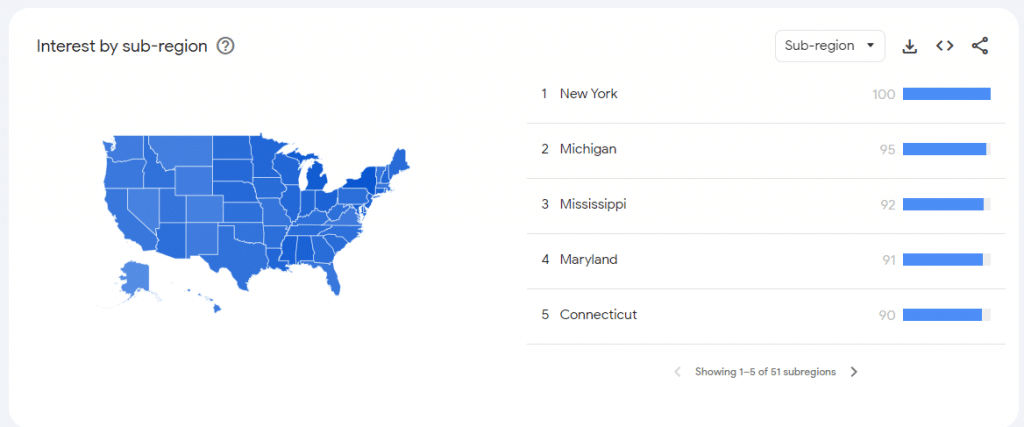
Find Profitable Niches
One of the most critical steps in building a successful dropshipping business is finding a profitable niche. Google Trends can be an invaluable tool in this process.
Using Google Trends to Identify Niches
- Search Volume Analysis: Enter various keywords related to potential niches and analyze their search volume over time. Look for niches with growing or stable interest rather than declining trends.
- Competition Analysis: Compare the search interest of different niches to understand the level of competition. High search interest with low competition can indicate a lucrative niche.
- Related Queries and Topics: Explore related queries and topics to uncover additional niche ideas that you might not have considered.
Tools and Techniques for Niche Research
- Keyword Research Tools: Combine Google Trends with tools like Google Keyword Planner, Ahrefs, or SEMrush to gain deeper insights into search volume, competition, and related keywords.
- Social Media Insights: Monitor social media platforms for trending topics and hashtags related to your niche. This can provide additional validation for your niche selection.
- Industry Reports and Blogs: Stay updated with industry reports and blogs to identify emerging trends and consumer preferences within your chosen niche.
By using Google Trends and other research tools, you can identify profitable niches with high demand and low competition, setting a strong foundation for your dropshipping business.
Find Winning Products
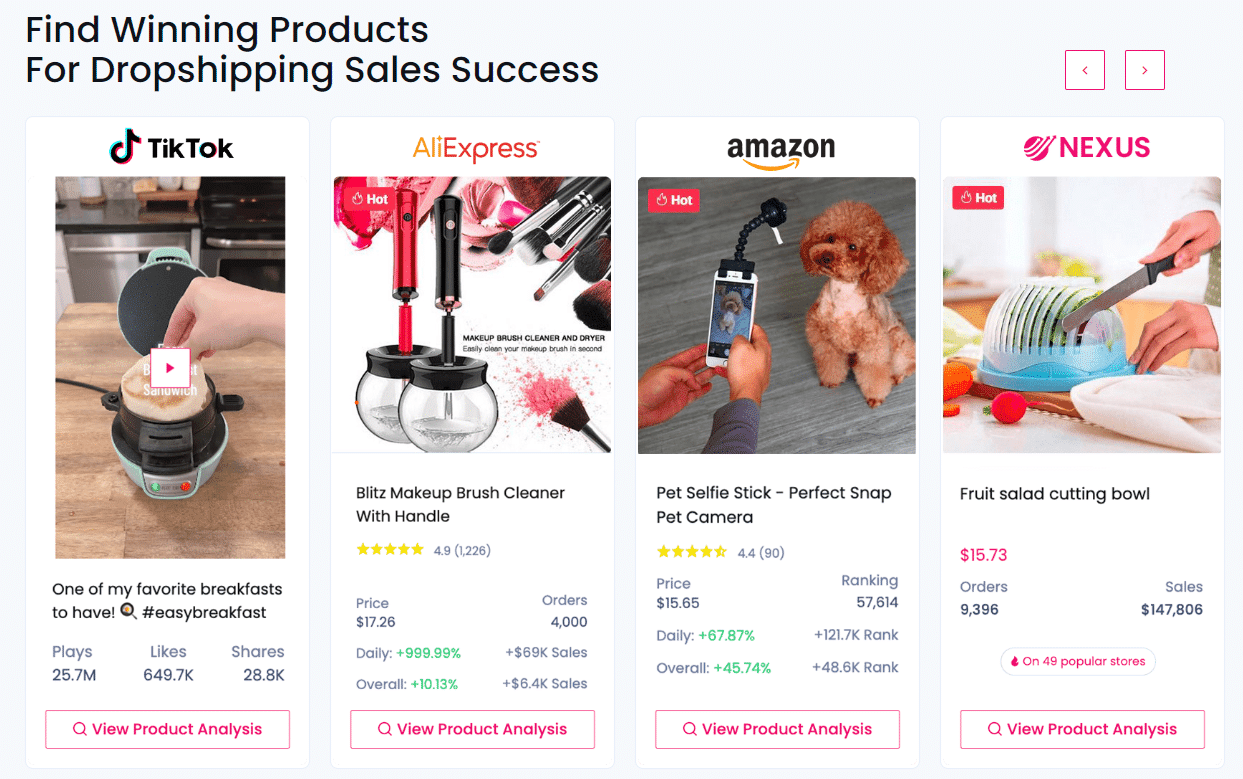
Finding the right products to sell is crucial for the success of your dropshipping business. Google Trends can help you identify winning products that are trending and have high demand.
Steps to Identify Winning Products
- Monitor Search Interest: Regularly check Google Trends for keywords related to your niche. Look for products with increasing search interest.
- Analyze Related Queries: Pay attention to related queries to discover new product ideas that are gaining popularity.
- Seasonal Trends: Identify products that have seasonal spikes in demand. Planning your inventory around these trends can lead to significant sales boosts.
Predicting Future Demand
- Historical Data Analysis: Use historical data from Google Trends to identify recurring patterns and predict future demand for products.
- Trend Extrapolation: If a product shows a consistent upward trend, it is likely to continue growing in popularity. Consider adding such products to your store early.
Real-World Examples
For example, during the rise of remote work, Google Trends data showed a significant increase in searches for ergonomic office chairs. Dropshippers who identified this trend early and stocked up on ergonomic furniture saw substantial sales increases.


Find Suppliers
Having reliable suppliers is essential for a successful dropshipping business. Google Trends can assist in finding suppliers that align with market demand.
Using Google Trends to Identify Suppliers
- Search for Supplier-Related Keywords: Use Google Trends to analyze search interest for keywords related to suppliers in your niche.
- Market Demand and Supplier Availability: Ensure that the suppliers you choose can meet the market demand identified through Google Trends data.
Tips for Selecting Suppliers
- Supplier Reviews: Look for reviews and feedback from other dropshippers to gauge the reliability and quality of potential suppliers.
- Response Times: Test the response times of suppliers to ensure they can provide timely customer service and support.
- Product Quality: Request samples from suppliers to verify the quality of their products before committing to a partnership.
Check Seasonal Trends
Seasonal trends play a significant role in the success of many products. Google Trends can help you identify and leverage these trends to maximize sales.
Identifying Seasonal Trends
- Yearly Search Patterns: Analyze search interest over multiple years to identify products with seasonal spikes in demand.
- Peak Seasons: Plan your inventory and marketing efforts around these peak seasons to capitalize on increased consumer interest.
Planning Inventory and Marketing Strategies
- Stock Up in Advance: Ensure you have enough inventory before the peak season begins to meet the anticipated demand.
- Seasonal Promotions: Create targeted marketing campaigns and promotions to coincide with the seasonal trends.
Examples of Seasonal Products
- Holiday Decorations: Products like Christmas lights and Halloween costumes see a significant spike in demand during their respective seasons.
- Summer Clothing: Swimwear and summer apparel experience higher search interest as the weather warms up.


Location Marketing
Understanding where your products are in high demand can help you target your marketing efforts more effectively. Google Trends provides geographical insights that are invaluable for location-based marketing.
Utilizing Geographical Insights
- Interest by Region: Identify regions with the highest search interest for your products using Google Trends.
- Tailored Marketing Strategies: Develop location-specific marketing strategies to target high-interest areas.
High-Demand Regions
- Regional Demand Analysis: Focus your advertising and promotional efforts on regions with high demand for your products.
- Localized Ad Campaigns: Create localized ad campaigns that resonate with the preferences and interests of consumers in specific regions.
Ad Targeting
- Improved ROI: By targeting ads to regions with high search interest, you can improve the return on investment (ROI) of your marketing efforts.
- Geographical Customization: Customize your ad content to align with regional preferences and cultural nuances.
Improve Keywords
Effective keyword optimization is crucial for improving the visibility and performance of your dropshipping store. Google Trends can help you enhance your SEO and PPC campaigns by providing valuable keyword insights.
Enhancing SEO and PPC Campaigns
- High-Performing Keywords: Use Google Trends to identify keywords with high search interest and relevance to your niche.
- Keyword Trends Over Time: Monitor how the popularity of specific keywords changes over time to adjust your strategy accordingly.
Relevant Keywords
- Target Audience Preferences: Focus on keywords that align with the preferences and search behavior of your target audience.
- Long-Tail Keywords: Identify long-tail keywords that have lower competition but high relevance to your products.
Integrating Keyword Insights
- Content Optimization: Incorporate high-performing keywords into your product descriptions, blog posts, and other content.
- Ad Copy: Use relevant keywords in your ad copy to improve the effectiveness of your PPC campaigns.


Find Fresh Insights
Staying updated with the latest market trends and consumer behavior is essential for maintaining a competitive edge. Google Trends can help you discover fresh insights and new opportunities.
Staying Updated
- Regular Monitoring: Set a schedule to regularly check Google Trends for new and emerging trends in your niche.
- Timely Adaptation: Be ready to adapt your product offerings and marketing strategies based on the latest data.
Discovering New Opportunities
- Emerging Products: Identify new products that are gaining popularity and consider adding them to your store.
- Consumer Behavior Changes: Stay informed about shifts in consumer preferences and behavior to adjust your strategies accordingly.
Examples of Fresh Insights
- Case Studies: Look at examples of businesses that successfully adapted to new trends by using Google Trends data.
- Market Shifts: Analyze how changes in market dynamics can create new opportunities for your dropshipping business.
Grow With Google Trends
Using Google Trends strategically can help you scale your dropshipping business and achieve long-term success.
Scaling Your Business
- Trend Analysis for Growth: Use trends data to plan your growth strategy and identify new market opportunities.
- Long-Term Planning: Develop a long-term plan that includes regular trend analysis and market research.
Continuous Market Analysis
- Regular Updates: Keep your product offerings and marketing strategies updated based on the latest trends data.
- Agility and Flexibility: Stay agile and be prepared to pivot your business model based on new insights.
Success Stories
- Business Expansion: Learn from the success stories of businesses that expanded their operations using Google Trends.
- Strategic Growth: Understand how strategic use of trends data can drive sustainable growth for your dropshipping business.
Automate Your Store
Automation can streamline your dropshipping operations and increase efficiency. By integrating Google Trends insights with automation tools like Sell The Trend, you can optimize your store for growth.
Streamlining Operations
- Inventory Management: Use automation tools to manage inventory based on trends data, ensuring you always have the right products in stock.
- Order Processing: Automate order processing to reduce manual work and improve efficiency.
Integrating Insights
- Automation Software: Combine Google Trends data with automation software to streamline your operations.
- Data-Driven Automation: Use trends data to automate decisions related to product selection, inventory management, and marketing.
Benefits of Automation
- Increased Efficiency: Automation reduces manual work and increases operational efficiency.
- Better Scalability: Automated systems can handle increased demand as your business grows.
FAQ
- How accurate is Google Trends data? Google Trends provides a reliable indication of search interest, but it’s essential to use it alongside other tools for a comprehensive analysis.
- Can Google Trends predict future trends? While Google Trends can highlight emerging patterns, predicting future trends requires careful analysis and consideration of various factors.
- How often should I check Google Trends? Regular monitoring, such as weekly or monthly, can help you stay updated with the latest trends and make timely adjustments to your strategy.
- How do I use Google Trends for SEO? Use Google Trends to identify high-performing keywords and incorporate them into your content and SEO strategy.
- What are the best practices for using Google Trends? Regularly monitor trends, analyze historical data, and combine insights with other market research tools for a well-rounded strategy.
- Is Google Trends only useful for large businesses? Google Trends is valuable for businesses of all sizes, providing insights that can help small dropshipping stores compete effectively.
Conclusion
Google Trends is an invaluable tool for dropshipping businesses looking to stay ahead of the curve. By strategically using this tool, you can identify trending products, plan for seasonal demand, target specific regions, and gain a competitive edge. Regularly monitoring and analyzing trends will enable you to make data-driven decisions that maximize the impact of your dropshipping business. Embrace the power of Google Trends and watch your dropshipping venture thrive in the ever-evolving e-commerce landscape.
By leveraging the insights provided by Google Trends, dropshippers can make strategic decisions that enhance their business’s performance and ensure they are always one step ahead of the competition.





